Among common pests, ants might be the most notorious.
One reason for this insect’s massive success is due to the great diversity of ant species, each of which has adapted to its own unique ecosystem.
Ants, which have been around for about 130 million years, are ground-walking and vertical-crawling insects closely related to wasps and bees.
And it would be unfair to characterize ants as weak just because of their size. These tiny organisms are like mini versions of Hercules, as each can lift around 50 times its own weight.
The state of Florida is home to numerous ant species, and they can be seen at any time of year.
Listed here are the most common ant species in Florida, along with key details about each.
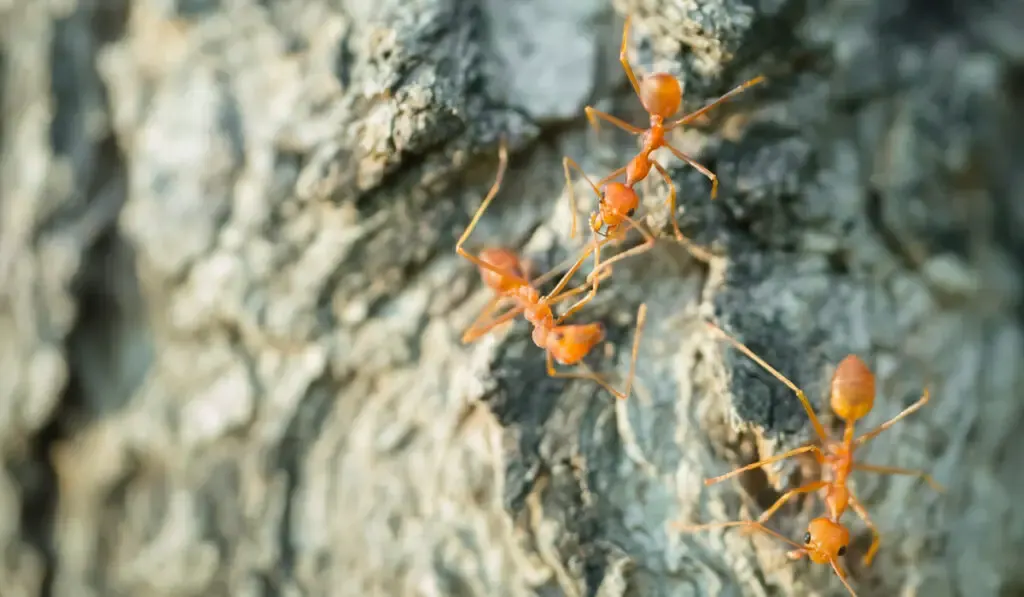
Table of Contents
7 Common Florida Ant Species
| No. | Name | Biting Abilities | Nesting Areas |
| 1 | Bigheaded Ants | Bigheaded ants may bite if provoked. However, their bites are not painful. They do not sting. | Under things that are solid, such as slabs, tree trunks, and foundations of buildings. |
| 2 | Carpenter Ants | They don’t sting or bite people. | In wood. |
| 3 | Fire Ants | They sting and cause severe burning and itching. | Outdoors in big ground mounds. |
| 4 | Ghost Ants | They bite but cannot sting. Their bites are harmless. | Indoors or outdoors. |
| 5 | Acrobat Ants | They might bite hard and cause severe burning and itching. | Damp places, such as cracks in rocks and rotting wood. |
| 6 | Pavement Ants | They may give a painful bite, but this is very rarely the case. | In the fractures and underneath concrete, asphalt, or cement surfaces. |
| 7 | Crazy Ants | They bite their victims and inject them with formic acid. Fortunately, they lack the ability to harm people. | Indoors and outdoors where dampness is constant. |
1. Bigheaded Ants
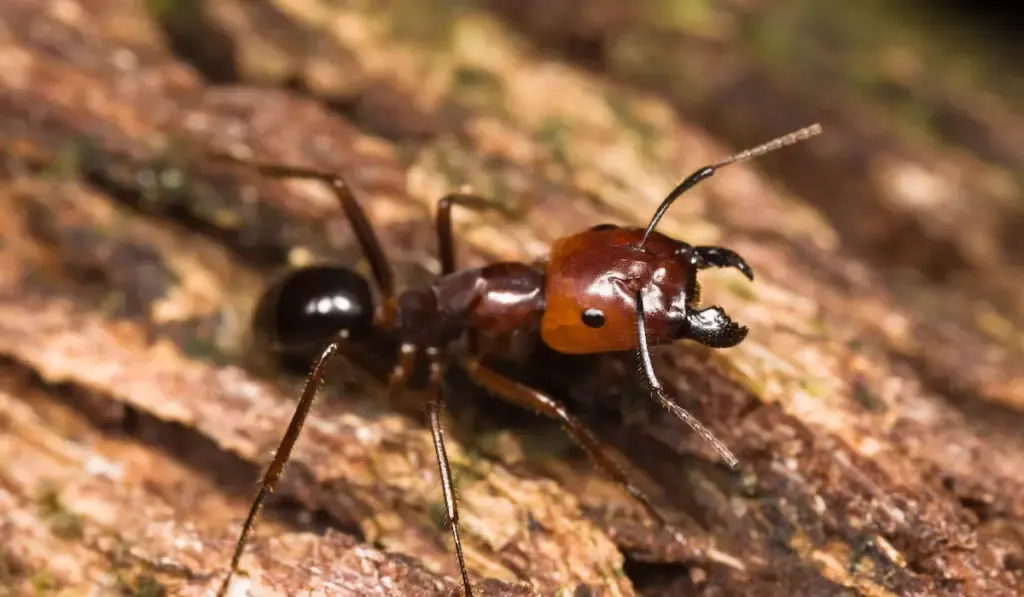
Bigheaded ants, which have their origins in both Africa and Australia, have recently emerged as a serious pest control issue in Florida.
Bigheaded ants have such a profound effect on ecosystems because these pests are territorial and hostile toward other kinds of insects.
Bigheaded ant colonies always have two types of ants: major workers and minor workers. The major workers have huge heads in comparison to the rest of their bodies.
They are normally a dark brown or black tint, and their length can vary between 1/8 and 1/4 inch.
Nesting areas for these ants are typically located under a slab or close to the perimeter of a building’s foundation. The foundations of houses are a common entry point for them.
As they tend to congregate in great numbers around food sources, bigheaded ants are easy to spot when they invade your home.
Bigheaded ants can’t sting, and they do not often bite people. These ants will only attack if their colony is in danger.
2. Carpenter Ants
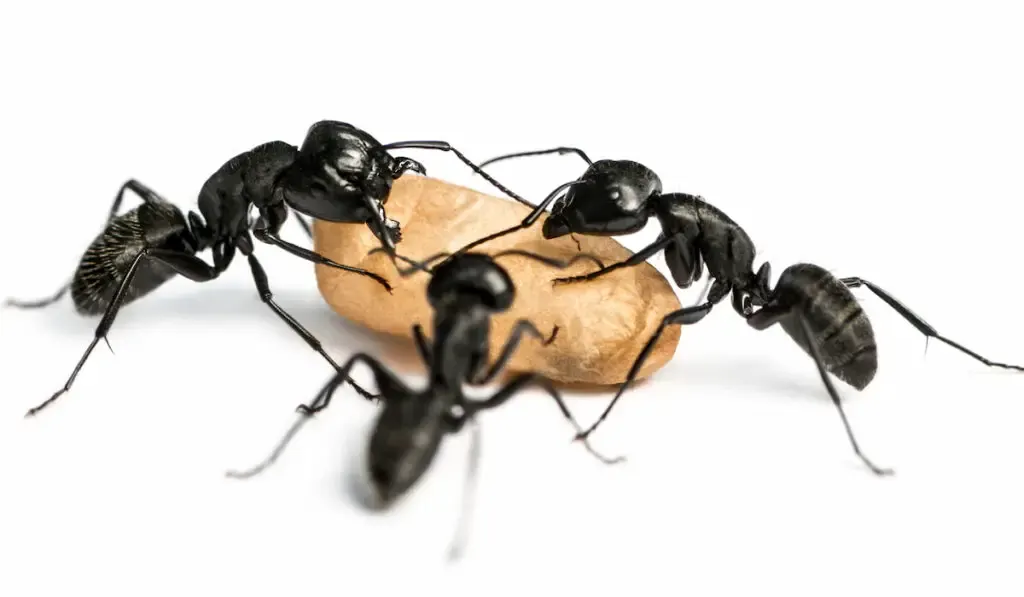
Florida carpenter ants can be any kind of brown, from black to reddish to light brown. They range in size from around 1/5″ to 1/2″ in length.
Carpenter ants acquire their name from the fact that they build their nests in wood.
Carpenter ants don’t eat wood. They dig through it and push the sawdust, called frass, out. As a result, they create clean and polished tunnels inside the wood.
Remember that prolonged exposure to this kind of excavation can cause wood to deteriorate.
Carpenter ants often get confused for winged termites because some of them can develop wings in the latter part of spring and early summer.
Carpenter ants, fortunately, are not a serious health hazard to people. They are harmless and won’t sting or bite.
Carpenter ants are especially problematic because they may quickly multiply into massive colonies and invade homes searching for food.
3. Fire Ants

Florida is home to two different kinds of fire ants.
Native to South America, the red imported fire ant has spread throughout the United States to the point where it is now classified as an invasive species.
Fire ants can be any shade from reddish brown to black and measure between 1/8 and 1/4 of an inch in length.
Another type of fire ant found in Florida, although far less common, is the Tropical or Native fire ant.
The color of these ants ranges from orange to rusty red. Their appearance earned them the label “ginger ants.” Their maximum size is only 1/8 to 1/4 inch.
There can be as many as half a million ants in a fire ant mound, which can be up to three feet across and eighteen inches high.
They’ll also make a home in structures, stumps, electrical boxes, and cracks in the ground.
When they sense that their nest is in danger, fire ants will use their severe sting to defend themselves and their colony. When stung, the affected area usually begins to burn and itch badly.
4. Ghost Ants

Ghost ants, often called sugar ants, are very small, invasive insects that are milky white or pale yellow in color with a brown head and thorax.
Because of their tiny size and clear or nearly transparent color, you could miss these insects for quite some time before you notice an infestation.
The worker ants of a colony are typically about one-sixteenth of an inch in length.
They’re drawn to warm, damp places like your kitchen and bathroom, where they can find both water and food.
These ants are extremely adaptable in their nesting habitats and may easily adapt to either indoor or outdoor environments.
They typically form medium-sized colonies, and they even nest in spots that can only be used for a couple of weeks or even days.
Ghost ants are unable to sting, but they can still bite. Nonetheless, their bites are harmless to humans.
5. Acrobat Ants
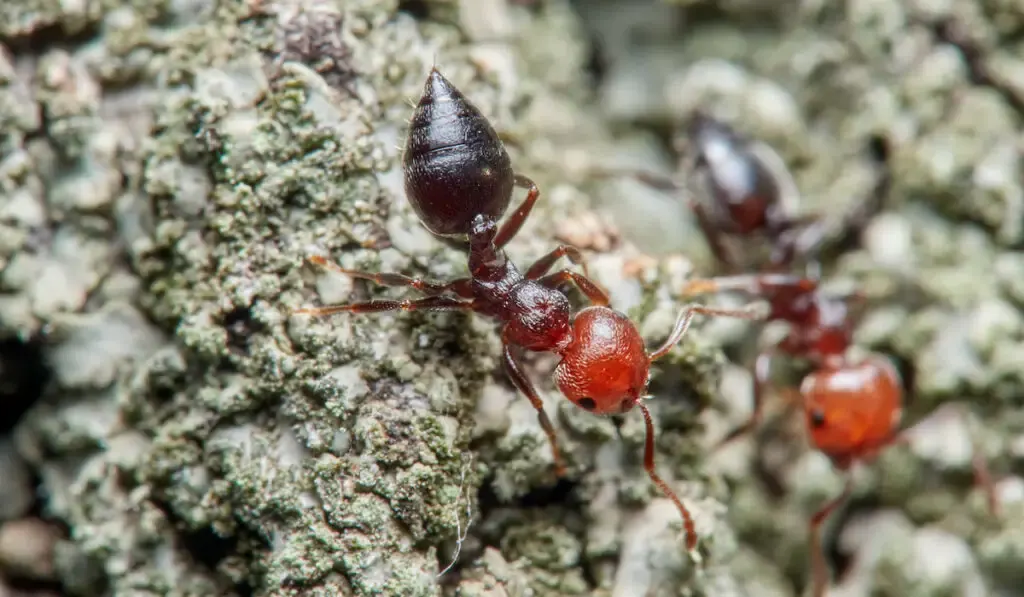
The term “acrobat ant” comes from the behavior of these insects, which is to raise their abdomens over their heads in an acrobatic manner, particularly if they are startled.
They have visible antennae, which can be either black or brown, and measure about 1/8 of an inch in total length.
When the workers are scared, they have a reputation for biting hard and releasing an unpleasant odor.
Acrobat ant bites often cause swelling, pain, and itching. Most of these negative effects, fortunately, only last for a short period of time, at most a few days.
Acrobat ants build their nests outside in damp places, such as cracks in rocks, tree stumps, and rotting or broken logs. Acrobat ants might cause significant damage to any wooden structure.
6. Pavement Ants
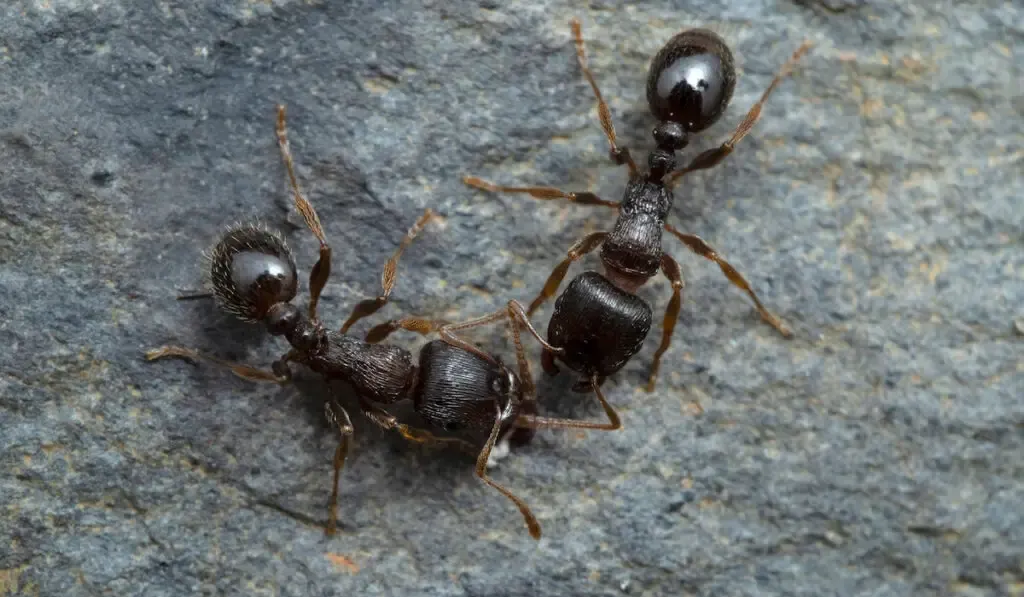
The pavement ant is a tiny ant species. The maximum adult size is barely around 1/8 of an inch. They have an oval, segmented body and antennae and can range in hue from brown to black.
Pavement ants, as their name suggests, like to set up a nest in the fractures of concrete or cement surfaces, including paths, foundations, cemented slabs, and roads.
While pavement ants are capable of giving a painful bite, this is an extremely unusual situation that should not cause much worry.
Although not harmful, a large number of pavement ants invading a home can be a nuisance.
Worker ants will go on a food scavenger hunt and might actually get into a home if they discover a freely available source of food.
7. Crazy Ants
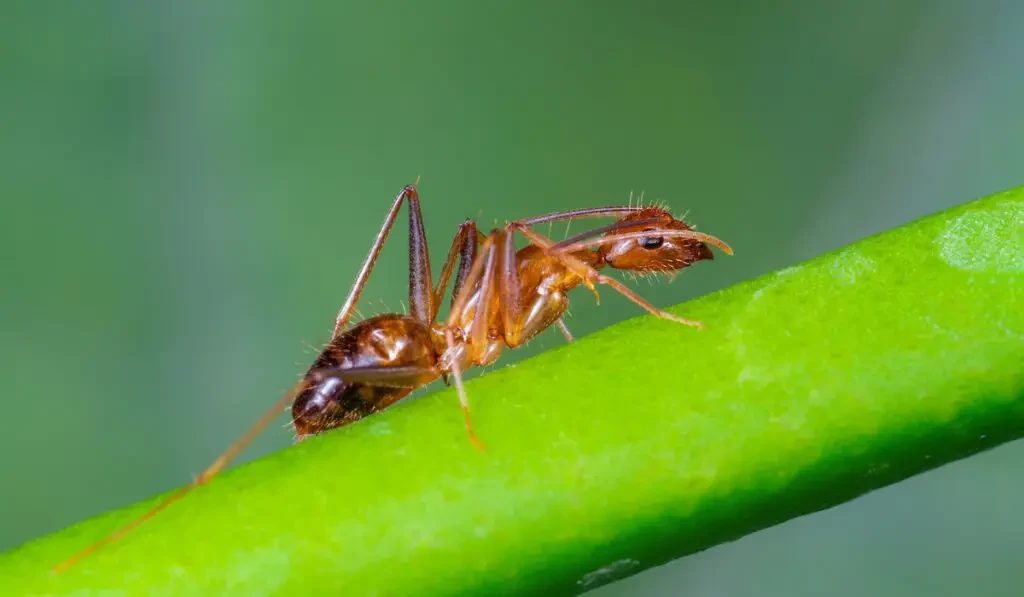
Crazy ant colonies are common in both indoor and outdoor settings. The nests of this species can be challenging to manage since the ants frequently venture far from their homes in search of food.
Outdoors, nests can be discovered anywhere there is a steady supply of moisture, but they are most commonly seen in mulched beds, underneath the root systems of trees, under rocks, and in the rubbish.
There are also crazy ant nests inside people’s homes. Typically they are found in the creases and fissures of walls and floors or near heat sources like water heaters and pipes.
Their name comes from the species’ propensity to travel quickly and randomly and its general lack of trail-following behavior relative to other ant species.
Crazy ants are about an 1/8 of an inch long and have slim bodies with exceptionally long legs and antennae. Their skin has a brownish-black coloration with a bluish sheen to it.
While they don’t sting, crazy ants will bite, and when they do, they’ll twist their bellies forward and inject their victims with formic acid.
Thankfully, they lack the power to cause harm to people.
Final Thoughts
In almost every ecosystem, ants provide an essential function. Ants come in a variety of types, and each of those species will consume practically anything that contains living tissue.
Unlike many other organisms that are pushed out of their habitats by human activities, ants flourish when living in close proximity to people. Because of this, they are a very prevalent type of pest.
Ant species found in Florida, such as crazy ants, acrobat ants, fire ants, ghost ants, and others, each present their own distinct set of obstacles and dangers.
As a result of the large number of ant species that are keen on moving into houses in the state of Florida, local homeowners use pest control and exterminating services very frequently.
Resources
- https://greenpestservicesfl.com/florida-ant-identification-guide-list-of-stinging-biting-ants-in-florida/
- https://www.nativepestmanagement.com/pest-library/ants
- https://www.orkin.com/locations/florida-fl/ants
- https://www.championtermiteandpestcontrol.com/6-most-common-ant-species-in-florida/
- https://entnemdept.ufl.edu/creatures/urban/ants/bigheaded_ant.htm
- https://www.michepestcontrol.com/pest-library/ants/bigheaded-ants
- https://entnemdept.ufl.edu/creatures/urban/ants/fl_carpenter_ants.htm
- https://florida-environmental.com/pests/ants/florida-carpenter-ant/
- https://www.pestworld.org/news-hub/pest-articles/carpenter-ants-silent-destroyer/
- https://florida-environmental.com/pests/ants/florida-carpenter-ant/
- https://www.excelpestservices.com/florida-fire-ants-an-all-inclusive-guide/
- https://www.imperialpestprevent.com/post/ghost-ants-and-how-to-kill-them
- https://www.bugs.com/blog/how-to-get-rid-of-ghost-ants-little-white-ants-in-florida/
- https://entnemdept.ufl.edu/creatures/urban/ants/acrobat_ant.htm
- https://southerngreenspestcontrol.com/blog/acrobat-ants-unique-florida-pest
- https://www.lindseypest.com/pavement-ant-identification
- https://www.nativepestmanagement.com/blog/post/how-worried-should-i-be-about-pavement-ants-on-my-fort-lauderdale-property
- https://entnemdept.ufl.edu/creatures/urban/ants/crazy_ant.htm
- https://www.heartspm.com/pest-control/ants/longhorn-crazy-ants.php
